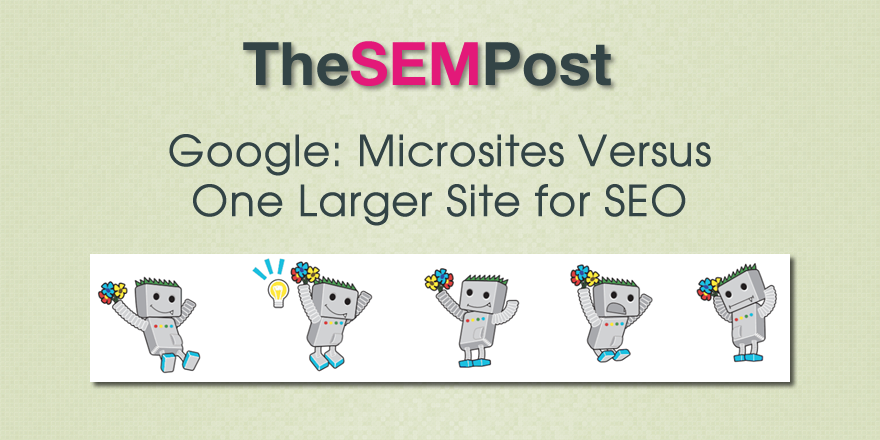 There are many differences of opinions over the value of creating one larger site versus multiple smaller ones from an SEO perspective, with both techniques being successfully used. However, it really comes down to execution and how well someone can create quality microsites versus the value of a single larger site with the potential for higher brand recognition.
There are many differences of opinions over the value of creating one larger site versus multiple smaller ones from an SEO perspective, with both techniques being successfully used. However, it really comes down to execution and how well someone can create quality microsites versus the value of a single larger site with the potential for higher brand recognition.
John Mueller from Google discussed how Google views the idea of microsites versus the one standalone site method.
The question in the hangout was about content silos, which Mueller interpreted as being about the practice of creating many microsites instead of a larger more comprehensive one for SEO purposes. Here is what he said:
I’m not particularly sure what you mean with content silos. I assume this is something like creating niche sites or something general… generally like that where you create small websites that are focused on one specific topic.
From my point of view, that’s usually something we recommend against, just because it’s a lot easier for you to maintain things on one website, where things are kind of interconnected on one website. And it’s a lot easier for you to kind of build up that almost like brand awareness, I guess, with regards to your one website, compared to having like, all of these other different individual websites that are kind of connected to your main website but not really on your main website.
So for the most part, I’d recommend trying to focus on like a smaller number of websites and keeping everything together and kind of tying everything together in a reasonable way so that when users find your content, they can easily kind of move along that path to actually converting into whatever you want them to do, if you want them to buy something or sign up for something. Kind of make that as easy as possible so that when they go back to your content, they know what to find and what to do.
This actually goes back to something that was posted on the Google Webmaster Blog back in 2010, when microsites and blog networks started to become a more popular SEO tactic.
At that time, Google said that for site owners wanting to create multiple site should ensure each site had unique, quality content.
While you’re free to run as many sites as you want, keep in mind that users prefer to see unique and compelling content. It is a good idea to give each site its own content, personality and function. This is true of any website, regardless of whether it’s a single-page hobby-site or part of a large portfolio.
They also added:
We suggest not spreading out your efforts too broadly, though. It can be difficult to maintain multiple sites while keeping the content fresh and engaging. It’s better to have one or a few good sites than a multitude of shallow, low value-add sites.
Of course, there are the usual caveats about ensuring that microsites aren’t actually doorway pages, which goes against the Google webmaster guidelines, as well as ensuring the content is valuable.
Bottom line, unless you are creating valuable microsites that visitors find useful, you may be better off putting your efforts into one more comprehensive site rather than many mediocre ones.